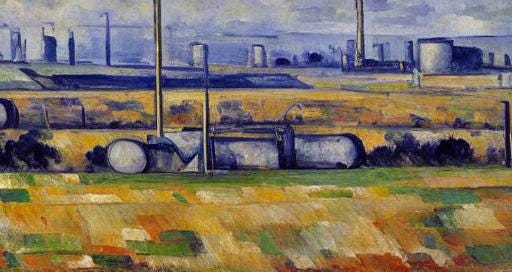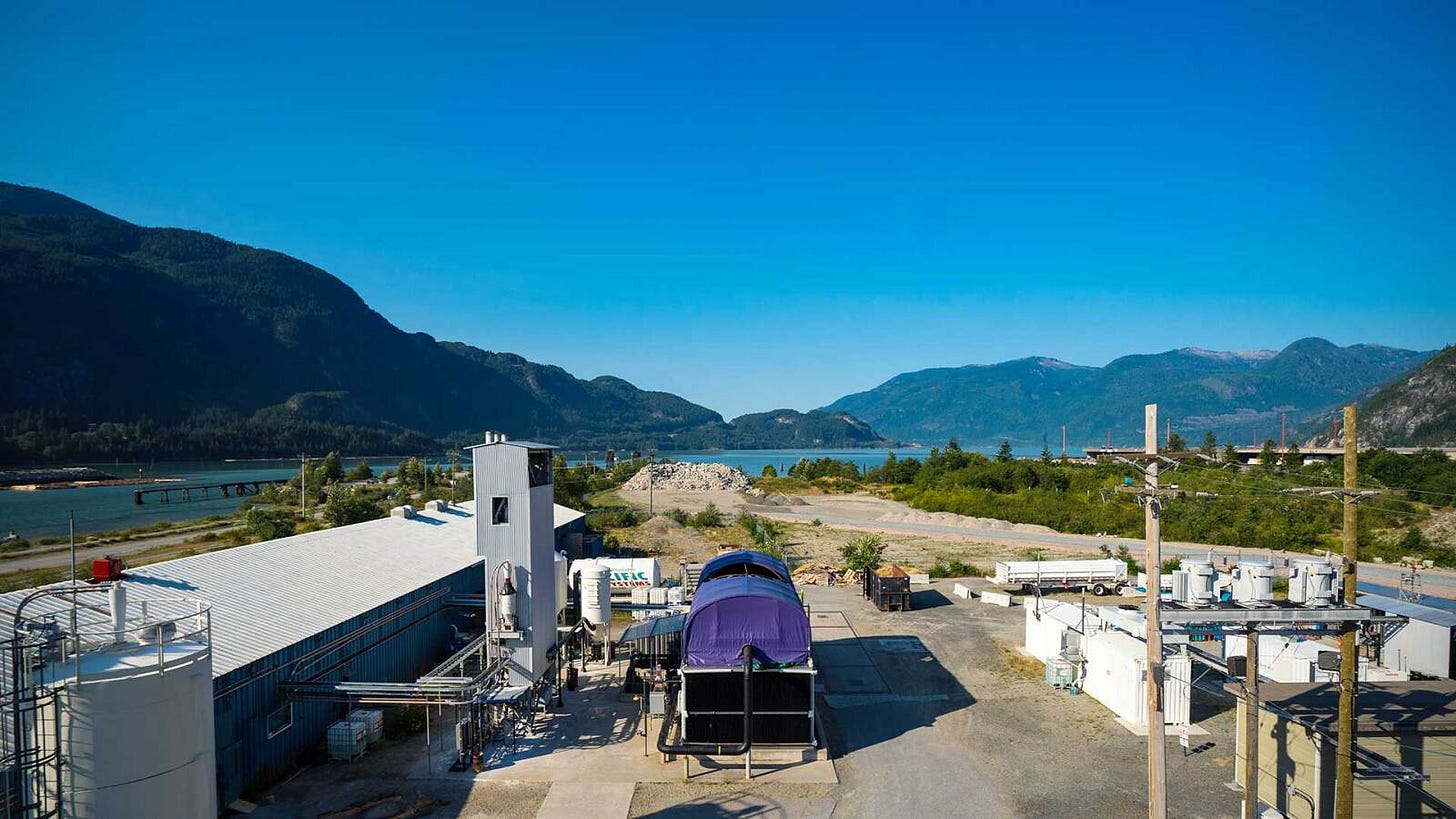Decarbon Debrief: Oxy acquires Carbon Engineering for Direct Air Capture technology
Pioneer DAC Company Acquired by Low-carbon Industry Leader
🚨 The Lead
The top story of the week.
Occidental acquired Carbon Engineering Ltd. for $1.1 billion in cash, with an entirely owned subsidiary partnering on DAC implementation since 2019. The purchase is in line with Occidental's net-zero goal, allowing the company to accelerate DAC technological improvements and deploy DAC as a cost-effective worldwide carbon removal solution.
This transaction is expected to close by the end of 2023, subject to Canadian court approval, Canadian and US regulatory clearances, and other customary closing conditions.
Occidental and Carbon Engineering are expected to increase shareholder value through technological innovation and faster DAC cost reductions. The purchase will generate additional income sources through technology licensing and royalties, allowing for larger development collaborations for DAC implementation.
Source: Carbon Engineering
Together, Occidental and Carbon Engineering can speed up the worldwide adoption of DAC technology, making it the ideal choice for enterprises looking to decrease emissions.
'We have always believed that global partnerships and cross-industry collaboration would be required to deploy DAC infrastructure at the scale required to make a climate-relevant impact. Carbon Engineering and Occidental have been working increasingly close together for the past five years to address the CO2 problem, making Occidental a trusted and committed partner for this next chapter in Carbon Engineering's journey,' said Carbon Engineering CEO Daniel Friedmann. 'At the core of this deeper relationship is the commitment to invest in the development of our technology here in Canada, and the global reach to accelerate implementation of DAC-based climate solutions in the U.S. and around the world.'
Stratos, the world's biggest DAC plant, is being built in Ector County, Texas, and is projected to be commercially operational in mid-2025. Occidental and Carbon Engineering are also adopting Stratos' front-end engineering and design studies for a DAC facility to be built at King Ranch in Kleberg County, which is part of the South Texas DAC Hub, which was chosen to receive funding from the US Department of Energy.
Todd’s Take:
Is this a speculative or strategic move by Oxy? Carbon Engineering’s liquid solvent technology is regarded as one of the leaders in DAC. However, with only a handful of pilots other companies such as Climeworks may be in a stronger position for commercial scale.
With two Texas DAC facilities on the horizon, Stratos and King Ranch, this could be a way for Oxy to secure supply to ensure the first two projects are a commercial success. It is no secret that Oxy has big plans for 100 direct air capture facilities to create low-carbon oil, fuels, and feedstocks. Bottlenecks due to materials, people, and capital are very likely
With larger deployments, new technology and efficiency challenges will emerge. You need the right people, along with the technology to make it a reality. Ensuring that Carbon Engineering is in lock-step with Oxy, 1PointFive, and other partners is key to the Oxy’s success.
The King Ranch facility is expected to be a similar, but smaller design as the Stratos project. To meet growing demand for low-carbon fuels and carbon removal credits, both of these facilities must meet their operational goals. Some critics will say this is greenwashing, but I don’t see it that way. This is a new market where Oxy through this acquisition is poised to become the market leader.
The Carbon Engineering acquisition, the partnership with 1PointFive & Worley, and other technology investments such as NET Power ($NPWR) and Cemvita, put Oxy at the forefront of commercializing and scaling low-carbon solutions.
Disclosure: I have no inside information about the financials of Carbon Engineering or the rationale of the acquisition.
✨ This Week in Decarbonization
Highlights from the week’s most popular stories in industrial decarbonization.
🙌 Carbon TerraVault’s California DAC Hub Consortium Selected for U.S. DOE Funding to Bring Direct Air Capture and Storage to the Golden State
🛢️ M2X Energy’s Innovative Methane Mitigation Solution Produces First Methanol
💧 FirstElement Fuel, the World-Leading Provider of Hydrogen Refueling Solutions, is Awarded $7.7 Million from the California Energy Commission to Scale up its Manufacturing Capacity USA
🏢 EDAC Labs Secures $3M Seed Funding for Carbon Removal via Acid-Base Electrochemistry
🟢 Cipher Neutron, dynaCERT’s Partner, Signs Green Hydrogen Collaboration Agreement with Strategic Resources
🗑️ Bion's Advanced Waste Treatment Technology Start-Up Yields Positive Early Results
✈️ JetZero Accelerates Fuel-Efficient Airliner Development with $235 Million Air Force Award
🎯 Fidelis New Energy Selects Mason County West Virginia for Lifecycle Carbon Neutral Hydrogen Project, Data Center Campus, and Greenhouse Complex
☁️ Capture This CO2
A single carbon capture or hydrogen project in industrial decarbonization.
Great Falls Montana Renewable Diesel Plant
🏭 Operator: Calumet
📌 Location: Montaina
⛽ Industry: Biofuels Production
🦺 Project Status: Announced
🌱 Project Type: Commercial
Calumet Specialty Products Partners L.P. on April 18 announced that its Montana Renewables subsidiary in Great Falls, Montana, has achieved design throughput capacity at its renewable diesel and sustainable aviation fuel (SAF) biorefinery.
Montana Renewables has been in the works for a number of years. Calumet announced plans in February 2021 to generate renewable diesel at its Great Falls petroleum refinery by modifying its large hydrocracker to process up to 15,000 barrels per day of renewable feedstocks, creating renewable diesel and SAF.
In late December 2022, Calumet stated that the biorefinery had generated a full month's worth of on-spec renewable fuel and had started shipping the product via rail. The Great Falls Montana Renewable Diesel Plant had a capacity of 6,000 barrels per day at the time, with a capacity increase to 12,000 barrels per day planned with the installation of renewable hydrogen, SAF, and feedstock pretreatment systems in early 2023.
The company has attained design throughput capacity now that those systems are online. According to business officials during a fourth-quarter earnings conference in March, current SAF capacity is between 2,000 and 4,000 barrels per day. Calumet is now exploring increasing overall capacity to 18,000 barrels daily, including 15,000 barrels per day of SAF.
🌍 Elsewhere
Highlights from research, data, or media partners covering the Energy Transition.
Porsche plans to manufacture e-fuel, a CO2-neutral synthetic fuel that will replace traditional gasoline. The southern Chilean pilot project plans to create 130,000 liters of e-fuel yearly at first, and then 550 million liters by the end of the decade.
E-fuels are synthetic fuels created using electrolysis, which uses clean energy to divide water molecules into hydrogen and oxygen. Synthesis is the reaction of green hydrogen generated by electrolysis with CO2 obtained from various sources. Synthetic hydrocarbon fuel, or e-fuel, is the end product of this.
One of the main benefits of e-fuels is that they may be a drop-in replacement for current combustion engines, decreasing CO2 emissions right away without the need for improvements or new equipment.
Although the e-fuel business is still young, employing this hydrogen and CO2 synthesis in place of fossil fuels, which now account for around 95% of all transportation fuels, is a very alluring idea for a sector with few decarbonization choices.
The site near Punta Arenas, Chile, was chosen because of its remoteness and consistently high winds, which make it perfect for producing wind energy. In this region, wind turbines may run at full power for about 270 days each year. Through electrolysis, water is divided into hydrogen and oxygen using the power produced by the turbines. Porsche then creates methanol by mixing hydrogen and CO2 that has been collected, and this methanol is subsequently converted into synthetic gasoline.
Three liters of desalinated water and CO2 captured from 6,000 cubic meters of air are needed to make one liter of e-fuel. Porsche's e-fuel manufacturing has the potential to impact the fuel industry, but it is now on a small scale. For instance, the Chilean facility could only provide the UK with enough e-fuel to last fewer than two weeks.
That's it for this week. If you'd like to dive into the data a little more with me, hit reply.






